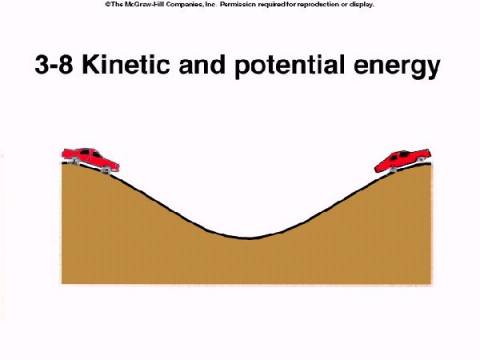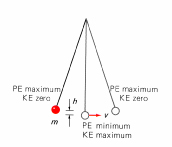
According to the law of conservation of energy, energy cannot be created or destroyed, although it can be changed from one form to another. KE + PE = constant. A simple example involves a stationary car at the top of a hill. As the car coasts down the hill, it moves faster and so itís kinetic energy increases and itís potential energy decreases. On the way back up the hill, the car converts kinetic energy to potential energy. In the absence of friction, the car should end up at the same height as it started.

This law had to be combined with the law of conservation of mass when it was determined that mass can be inter-converted with energy.
One can also imagine the energy transformation in a pendulum.
When the ball is at the top of its swing, all of the pendulumís energy
is potential energy. When the
ball is at the bottom of its swing, all of the pendulumís energy is kinetic
energy. The
total energy of the ball stays the same but is continuously exchanged between
kinetic and potential forms. The CD
from the book has a great animation for this.
